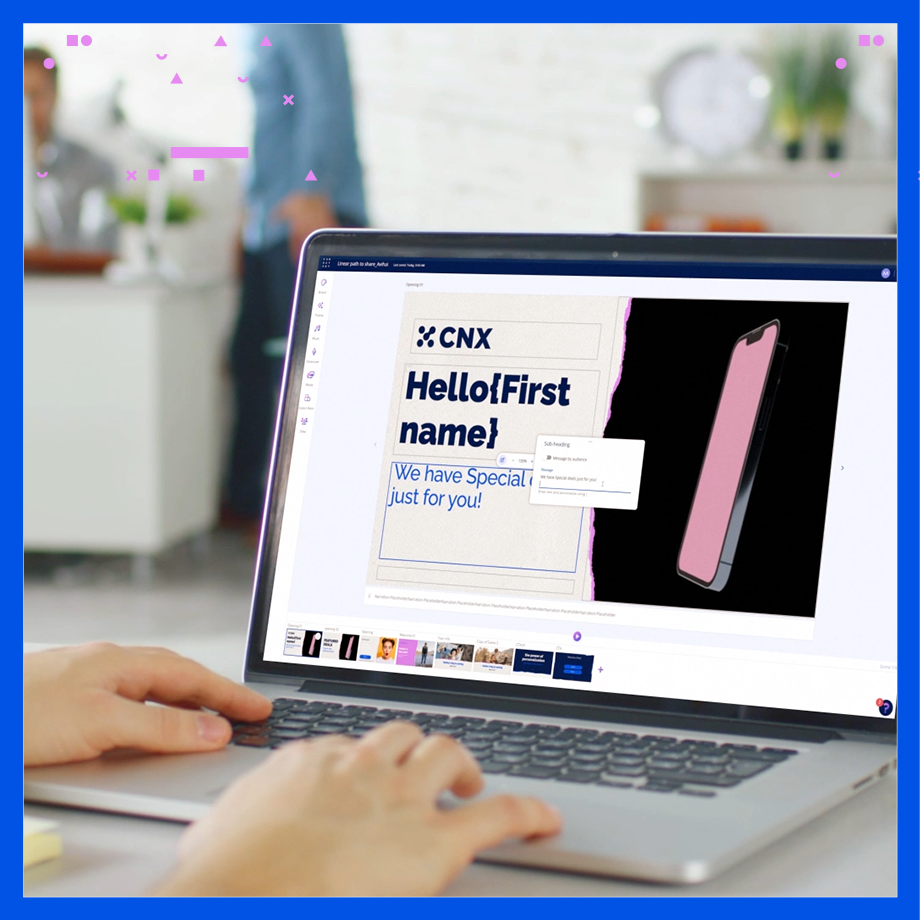2020 was a year that put digital customer experience in the spotlight with brands reactively supporting increased digital interactions while pushing an abundance of customer care messages. But as the new year takes shape, customers will continue to lean heavily on digital as their primary task and communications channel, expecting nothing short of a superior experience from brands. Healthcare patients are no exception, but the industry remains one of the most fragmented, resulting in slow improvements despite heavy investments in digital and the customer experience.
Forrester reveals that less than 50% of consumers logged into their health insurer or healthcare provider’s website or mobile app in 2019. Complex terms and text-heavy descriptions of important topics like co-pays, deductibles, and out-of-network costs, result in a confusing and frustrating patient experience. Healthcare organizations must listen to members to understand how they want to engage throughout their journey as there’s ample opportunity to enrich the customer experience beyond the doctor’s office.
“Less than 50% of consumers logged into their health insurer or healthcare provider’s website or mobile app”
Where Is Patient Experience Heading in the Near Future?
Emerging technologies are slowly becoming the norm in healthcare experiences. Telehealth and virtual care adoption is stabilizing with physicians expecting to continue to do 21% of their interactions virtually, even post-pandemic. It’s easy, effective, and the video element humanizes the experience. However, it only replaces office visits, a fraction of the patient journey. Chatbots provide instant and easy conversational responses for patients across their journeys, but AI solutions still lack humanization.
Why Is Customer Experience in Healthcare So Difficult?
Very similar to the customer experience in banking and other complex industries, the patient and member experience is a difficult path to navigate. Healthcare is a fragmented industry with many different stakeholders and touchpoints between insurers, providers, and patients. The inconsistent experiences across the full member journey cause confusion. Deciding on a health plan, trying to understand benefits, and the cost difference between in-network vs. out-of-network are just a few items that vary from patient to patient, but in many instances, a patient is left to read a lengthy pamphlet or communicate with a chatbot to understand how they can make the most out of their plan.
Today’s consumer wants a healthcare experience that mirrors the ease, convenience, and transparency of their banking, retail, and other purchasing experiences set by digital leaders. But the challenges to deliver digital customer experiences in healthcare are real; a few examples:
- Prioritizing key moments in the customer journey,
- Determining the best medium and delivery channel for patient communication,
- Affordably building and scaling creative with an ability to update as business needs of the healthcare organization change, and
- Accessing data (while remaining HIPPA compliant) to deliver relevant messaging to each health plan member.
Why Spend Time and Money Improving Customer Experience in Healthcare?
Disengaged patients are costly for health insurers. In fact, two-thirds of patients mistakenly see an out-of-network provider, leaving both them and their insurer having to pay more. Believing they’re in-network and cost & coverage questions are by far the most common reason for customer service calls. Further, patients are less likely to consult with their providers, use digital tools, adjust their behaviors towards proactive healthcare, or trust their provider. They won’t hesitate to change insurers if they feel their current plan isn’t satisfactory, but as mentioned earlier, part of this problem is that they’re often confused.
“83% of health insurance customers who feel valued will advocate for the brand”
- Engaged consumers cost less, make better decisions around their healthcare, and are easier to retain as they have higher levels of customer satisfaction. Forrester’s US Health Insurers Customer Experience Index, 2020 put Florida Blue at the top and tied two other leaders—including SundaySky customer Kaiser Permanente—as the brands with the easiest and most emotionally positive experiences. The report emphasizes that feeling appreciated, respected, and valued opens the door for enrichment, revealing 83% of health insurance customers who feel valued will advocate for the brand, and 56% plan to purchase additional benefits or programs from the brand. Check out the full ranking below:
Leveraging Video to Revive Customer Experience in Healthcare
Healthcare payers need to present complex information in a relevant, easy-to-understand format that helps patients feel confident that they’re making the best decisions. And because healthcare is such a personal topic, healthcare payers must humanize the experience across all communications. This means rethinking the traditional text-heavy messages and delivering personalized video experiences for healthcare. Video is the most emotive and engaging medium with an ability to tailor information that provides clarity on complex topics, but it has a stigma; it’s difficult and costly to create, scale, and keep current with changing healthcare regulations.
Utilizing an interactive video experience platform solves this problem. It enables video modularity, can scale to millions of members, and offers the ability to edit with agility whenever needed, all while keeping costs down. Modular video-powered experiences are composed of separate scenes that are selected in real-time within individual member experiences. They can be used with as much data available, or necessary, to align with different business goals and they can be used across the member journey to distill complex topics.
Here are some key moments across the member journey where video has proven to drive behavior change and elevate the customer experience in healthcare:
- Pre-enrollment: Educate potential members on plan differences to help them select the best plan that fits their needs
- Onboarding: Educate new and returning members on important topics like choosing a PCP, cost of care, plan & RX benefits, FSA/HSA details, and more
- Digital Education: Engage and inspire existing members to adopt the next best digital behavior, like managing a claim or scheduling an appointment through the mobile app and online portal
- Pre-Visit: Help address pain points around the first visit process, walk members through their upcoming appointment including plan benefits and costs
- Claims: Define terms that align to top call drivers and walk members through each component of their payment responsibility to remove any financial surprise related to the claim amount
Major healthcare payers like Anthem, Aetna, and EmblemHealth who partner with SundaySky are experiencing significant gains when they use video-powered experiences: a 40% reduction in calls and a 55% increase in digital engagement. Check out this UnitedHealthcare personalized video experience proactively delivered to its members via their account portal:
Taking Care of Your Customers With Video-Powered Experiences
Provide the information and supportive communications healthcare members need to make the best choices for their care. Video-powered experiences offer the tailored education and guidance today’s consumers demand and will help you drive behavior change while reducing costs. With a video experience platform, creating modular videos is quick, simple, and cost-effective.









